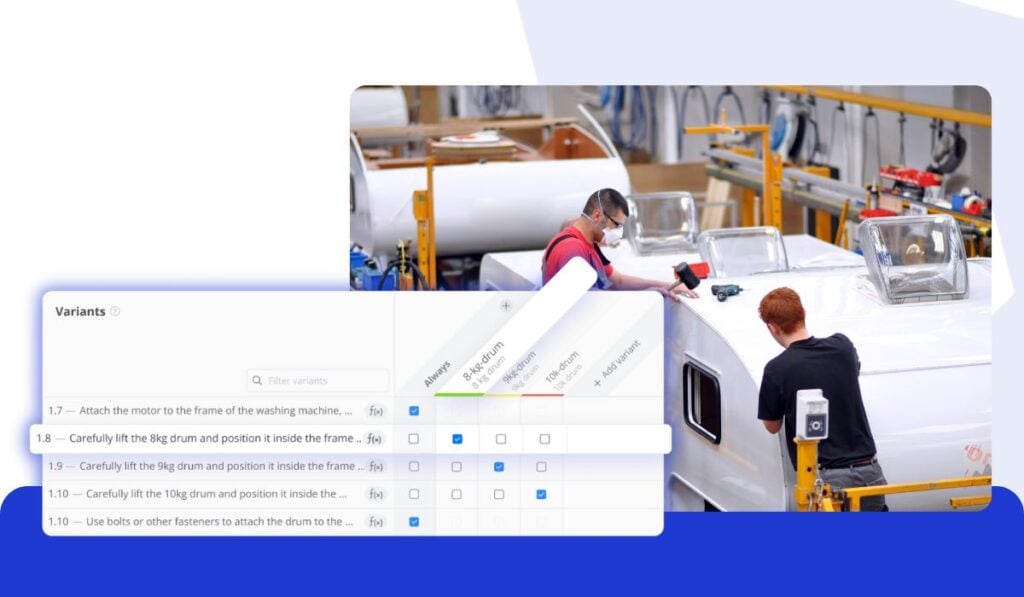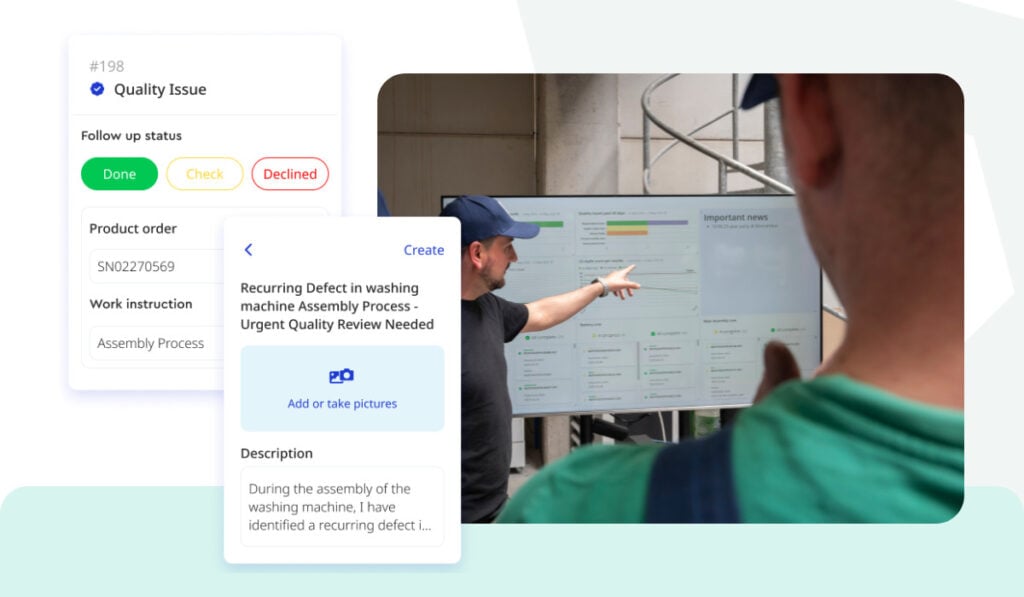Manufacturing Execution Systems (MES) are the digital backbone of the factory; managing everything from work orders and production tracking to quality control and compliance. While traditionally installed on-premise, MES solutions are increasingly moving to the cloud. This shift, accelerated by global disruptions like the COVID-19 pandemic, has highlighted the need for greater agility, remote access, and system resilience in manufacturing.
Since manufacturing is prone to supply chain shocks, shifting demand, and workforce challenges, a cloud-based MES helps manufacturers reduce risk through real-time visibility, faster scaling, and always-updated capabilities. In this article, we’ll break down how cloud MES works, how it compares to traditional systems, what to look for in a solution, and why it’s becoming a critical component of future-ready manufacturing operations.
How Cloud MES Differs from Traditional On-Premise MES
On-premise MES refers to the classic setup where the MES software is installed on servers and hardware located at the manufacturing facility. Cloud MES, in contrast, is hosted off-site (often by the MES vendor or on platforms like AWS or Azure) and accessed via the internet.
Traditional MES systems are installed locally and require significant IT maintenance, dedicated infrastructure, and manual updates. Scaling these systems across multiple sites is often costly and time-consuming. Any updates or integrations need to be repeated site by site.
Cloud MES, in contrast, is hosted remotely and accessed via the internet. It eliminates the need for local servers, enables instant scalability, and ensures real-time access to production data from any location. Updates are automatic, security is managed centrally, and multi-site coordination becomes far more straightforward.
This architectural shift also means a shift in IT roles. With cloud MES, internal teams no longer need to manage infrastructure or apply software patches. Instead, the MES vendor handles uptime, backups, and security, freeing your team to focus on improving processes rather than supporting software.
Cloud MES also supports remote visibility, enabling production managers and engineers to monitor operations and respond quickly, even when they aren’t on-site. This became essential during the pandemic and has since become a long-term expectation.
Another important distinction is accessibility. Traditional MES platforms typically restrict data access to specific devices or networks. With a cloud-based solution, users can securely access insights and dashboards from any location with an internet connection. This increases collaboration between departments and empowers leadership with the information they need to make faster decisions.
The Benefits of Cloud MES for Manufacturing
Adopting a cloud-based MES can bring transformative benefits to manufacturing operations. It’s not just an IT trend – it directly impacts productivity, cost, and risk in positive ways. Some of the top benefits manufacturers see with cloud MES are:
- Rapid Scalability and Flexibility
Scale production or sites on demand without IT overhead; adapt quickly to changing market needs. - Lower IT Costs and Maintenance
Reduce infrastructure and support costs; shift from capex to predictable subscription pricing. - Always Up-to-Date
Get instant access to new features and security updates; eliminate complex upgrade cycles. - Enterprise-Wide Visibility and Collaboration
Centralize production data across plants; enable real-time reporting and cross-site coordination. - Remote Access and Resilience
Monitor and manage operations from anywhere; maintain control even when teams are off-site. - Improved Quality and Traceability
Capture all quality data in one place; trace issues back to the source in seconds. - Built-In Disaster Recovery
Rely on redundant cloud infrastructure; protect against data loss and minimize downtime. - Focus on Core Manufacturing
Offload IT maintenance tasks; free up teams to improve processes and drive innovation.
All these benefits boil down to one theme: agility. When manufacturers must be agile to survive disruptions, a cloud MES provides the adaptable foundation needed. It reduces many kinds of risk – from IT system failures to data blind spots to inability to respond quickly – thereby “enhancing operational agility” for the company.
Key Features to Look for in a Cloud-Based MES
Not all MES solutions are created equal. When evaluating a cloud-based MES for your factory, it’s important to ensure it has the right mix of features to truly drive productivity and mitigate risk. Here are some key features to look for (and expect) in a modern cloud MES:
Production Order Management & Tracking
Plan, schedule, and monitor orders from start to finish. Sync orders from your ERP, assign them to lines, and track live execution. Every step is logged for full traceability, helping you respond quickly to delays or deviations.
How does Azumuta do it?
Azumuta links product orders directly to instructions, allowing automatic configuration of parameters aper nd variant data.
Digital Work Instructions & Knowledge Management
Deliver up-to-date SOPs, guides, and visual instructions directly to operators. Support complex product variants with step-by-step, media-rich instructions. Make updates instantly available across sites and reduce training time for new staff.
How does Azumuta do it?
Azumuta allows mediarich, such as video- or image-based instructions linked to specific tasks or product variants.
Quality Control and Compliance Tools
Run in-line checks, record quality data, and manage non-conformities. Use tools like SPC, AQL sampling, and CAPA workflows to detect and address issues early. Ensure audit trails and electronic records are always available for compliance.
How does Azumuta do it?
Azumuta, automatically generates quality reports linked to product or batch orders.
Equipment Integration and IIoT Connectivity
Connect machines via IIoT or PLC interfaces to capture real-time performance data. Enable automated counting, downtime tracking, and OEE monitoring. Integrate with ERP to keep inventory, orders, and production status in sync.
How Azumuta does it?
Azumuta integrates with torque tools, label printers, and other peripherals on the shop floor. Industrial machines can also be connected via APIs or external middleware to feed data into the system.
Real-Time Dashboards & Analytics
Provide live, role-specific dashboards across teams—from operator to plant manager. Monitor KPIs like output, quality, and downtime in real time. Analyze trends, generate reports, and apply insights to drive continuous improvement.
How does Azumuta do it?
Azumuta offers customizable dashboards with drill-down capabilities for each operator.
Centralized Document Management
Manage work instructions, checklists, maintenance logs, and technical documents in one place. Keep all teams aligned with the latest versions and approval history. Quickly access records during audits or process reviews to stay compliant.
How does Azumuta do it?
Azumuta’s document module includes version control, approval flows, and links to instructions, training, and quality checks.
In summary, a cloud MES should cover all the core functions of running a factory – production planning, execution, quality, logistics, and continuous improvement – within a single integrated platform. The best solutions do this in an operator-friendly way, providing real-time feedback and guidance on the shop floor, while giving managers the high-level tools to analyze and optimize.
Learn More About Azumuta’s Digital Work Instructions
Here’s the first step to have a paperless factory
Top Cloud MES Software Providers
The move to cloud MES is a broad trend, and a number of software providers offer solutions in this space. Below are a few of the top cloud MES software providers making an impact, each with a different focus and strength:
- Azumuta
Modular, operator-first MES built for cloud-native execution. Covers the full shop floor—from instructions and quality to training and traceability. - Plex (Rockwell Automation)
Mature platform with strong ERP and supply chain extensions. Best suited for large enterprises seeking end-to-end integration. - Siemens Opcenter (Cloud)
Feature-rich MES adapted for cloud deployment. Strong fit for highly regulated, enterprise-scale manufacturers. - Tulip
No-code, app-based MES for quick customization. Ideal for continuous improvement and flexible frontline operations.
The MES market is evolving quickly, but across the board, the trend is clear: vendors are bringing MES to the cloud to deliver more value, faster, to manufacturers of all sizes.
How to Migrate Your Manufacturing Operations to the Cloud
Implementing a cloud MES or migrating from an existing on-premise MES to the cloud requires careful planning. It’s a significant project, but one that can be managed in steps to minimize disruption. Here’s a high-level guide to migrating your manufacturing operations to a cloud MES:
- Start with a clear assessment.
Identify current bottlenecks—like limited visibility, manual paperwork, or disconnected systems. Define your must-have features and integration needs based on real shop floor pain points. - Choose the right partner.
Evaluate vendors for fit, not just features. Look for proven industry experience, integration options, ease of use, and support. Involve both IT and production teams early to ensure alignment. - Roll out in phases.
Avoid risky “big bang” deployments. Start with a pilot—one line, module, or site. Use it to validate performance, get user feedback, and fine-tune before scaling up. - Prepare your data and devices.
Ensure reliable shop floor connectivity, and clean up existing data like BOMs, instructions, or checklists. Get your ERP and machines connected so the MES has what it needs to run effectively. - Train, monitor, and adapt.
Support users with hands-on training and respond to early feedback quickly. Celebrate small wins to encourage adoption, and keep refining based on data and user input. - Make it a continuous improvement engine.
Once live, use your MES data to optimize processes, catch risks earlier, and drive decisions. Treat the system as an evolving tool, not a one-time install.
By breaking the migrating project into manageable phases and focusing on practical goals, manufacturers can derisk the transition while gaining agility, efficiency, and long-term resilience. With thoughtful planning and team involvement, the payoff is a future-proof production environment that’s ready for whatever comes next.
Why Cloud MES is the Future
Manufacturing is undergoing a digital transformation, and cloud-based MES is at the heart of this evolution. The future of manufacturing demands agility, resilience, and insight – exactly what cloud MES delivers. By centralizing shop floor data and applications in the cloud, companies gain a level of responsiveness and foresight that traditional systems simply couldn’t provide. They can adapt swiftly to new opportunities or disruptions, leveraging real-time information and scalable computing power.
We are already seeing a shift in the industry. More and more manufacturers are choosing cloud MES solutions to run their operations, following the success of cloud adoption in other enterprise systems like ERP.
This momentum is driven by the clear returns: lower costs, faster innovation cycles, and the ability to coordinate production on a global level. Cloud MES has proven its value in challenging times – from enabling remote work during a pandemic to helping reconfigure supply chains on the fly – and it will be the backbone of smart factories going forward.
Investing in a cloud MES is not just an IT upgrade, but a strategic move to derisk your factory for whatever lies ahead. It provides a safety net through better data, proactive quality control, and professional infrastructure management. It also opens the door to advanced technologies: once your production data is in the cloud, you can easily apply machine learning for predictive maintenance, use digital twins to simulate improvements, or integrate with augmented reality tools for training – the possibilities to innovate are endless.
In summary, cloud-based MES is the future because it aligns with the core goals of modern manufacturing: be more adaptable, more efficient, and more connected. Factories that embrace cloud MES position themselves to respond faster to change, whether that change is a sudden market demand spike or a new compliance requirement.
They gain visibility and control that spans beyond a single site, turning manufacturing into a coordinated, intelligent enterprise. In a volatile world, this agility is the ultimate competitive advantage. By adopting a cloud MES now, you’re not only reducing the immediate risks and pains of today – you’re building the foundation for a smarter, more resilient factory that can thrive no matter what tomorrow brings.
Use Azumuta’s Platform
See how our platform can help streamline data collection, increase productivity, and increase quality assurance with a demo of Azumuta.




